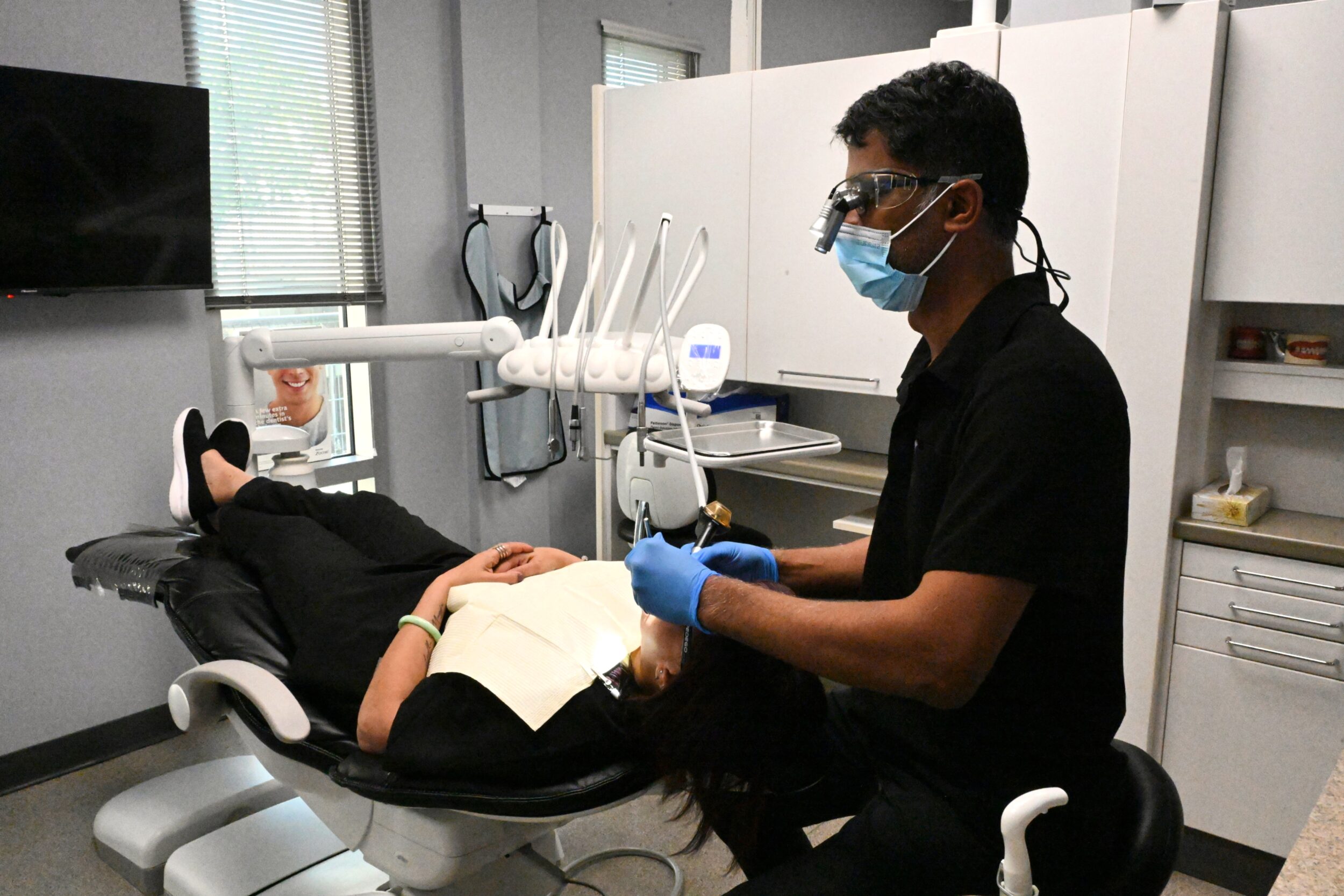Proper Brushing And Flossing In Calgary, AB
To maintain proper oral hygiene, brushing and flossing are of paramount importance. Despite the fact that bi-annual professional dental cleanings remove plaque, tartar, and debris from your mouth, excellent homecare methods are also as important. It is a necessity to brush and floss properly so that the mouth stays healthy and the smile shines. Proper brushing and flossing can also prevent serious illnesses from occurring.

The following are reasons why brushing and flossing are essential:
- Dental decay prevention – A common cause of tooth loss is tooth decay, and the treatment of tooth decay can often be complicated due to its effects on the structure of the teeth. In order for tooth decay to occur, the acids found in plaque must erode the natural enamel found on the teeth in order for them to work. By practicing proper hygiene methods at home, one can easily prevent the occurrence of this phenomenon.
- Preventing periodontal disease –
It is widely recognized that periodontal disease is one of the most serious, progressive conditions that is associated with tooth loss, gum recession, and jawbone recession. It is believed that periodontal disease is caused by the toxins found in plaque, and it can result in serious health problems in other parts of the body in the long run. Plaque and calculus (tartar) on the surface of the tooth can be removed using a toothbrush, while dental floss is also a very effective tool for removing plaque and calculus from the interdental areas of the teeth. This is a very effective way to prevent periodontitis.
- Preventing halitosis – Halitosis, or bad breath, is commonly caused by old food particles that are lodged between the teeth or on top of the teeth. Keeping the mouth healthy by brushing and flossing regularly will help ensure food particles are removed from the mouth, allowing the breath to smell fresher and the mouth to be healthier.
- Preventing staining – The staining or yellowing of teeth can be caused by a wide range of factors, including smoking, drinking coffee and tea, as well as the use of certain medications. By regularly brushing and flossing your teeth, you will be able to remove these staining agents from your teeth thereby reducing the chances that the stains will become permanent over the course of time.
How to Brush Properly?
In order to keep your teeth healthy, you should brush your teeth at least twice a day; ideally in the morning and before going to sleep. Ideally, a toothbrush should be small in size, with soft, rounded-end bristles, and it should not be older than three months at the time of purchase. A good brush needs to have a small enough head so that it can reach all areas of the mouth, and it should have soft enough bristles so that the tissue around the gums will not be damaged in any way. According to the Canadian Dental Association, rotating or oscillating toothbrushes are more effective than other types of toothbrushes because of the rotating or oscillating heads that they possess.
The following are some basic guidelines for brushing properly:
- It is recommended that the toothbrush is placed at a 45-degree angle between the gums and the teeth.
- Gently brush the gum line and teeth using small circular motions.
- The gums and tooth enamel can be damaged by excessive scrubbing or pressure applied to the teeth.
- Make sure that you brush every surface of every tooth, including the cheek side, tongue side, and chewing surface. Pay particular attention to the surfaces of the back teeth.
- Brush the chewing surfaces using back and forth strokes.
- To remove fungi, food, and debris from the tongue, brush it with a toothbrush.
How to floss properly?
There are many benefits to flossing, one of which is the removal of plaque from the interdental regions (between the teeth). As a preventative measure and as a way to limit the depth of a gum pocket, flossing is a very effective way to prevent periodontal disease. A toothbrush cannot reach the areas between the teeth, so dental floss should be used to clean them on a daily basis as they are difficult to reach with a toothbrush. As long as you choose floss that is easy to use and pleasant to use, it does not matter what the flavor or type of floss is.
Flossing should be performed according to the following guidelines:
- Cut a piece of floss approximately 18 inches in length.
- The floss should be wrapped around the middle finger of the left hand and the middle finger of the right hand until the hands are 2-3 inches apart.
- The floss should be worked gently between the teeth toward the gum line.
- Make a slight curve in the floss and gently slide it beneath the gum line around each tooth, forming a U-shape around each tooth.
- In order to remove the plaque and debris from between the teeth, move the floss up and down several times carefully.
- Floss should not be popped in and out between the teeth because it will inflame and cut the gums as you do this.
Please feel free to contact your dentist or dental hygienist if you have any questions about the correct way to brush your teeth or floss them.